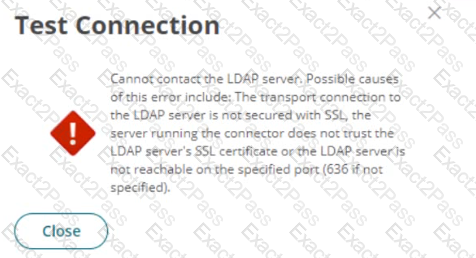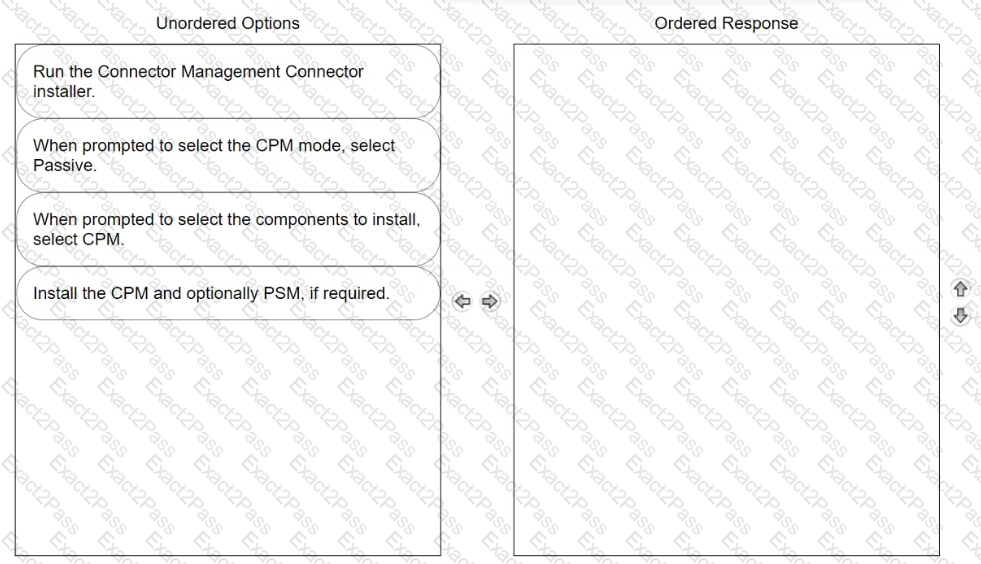Last Update 2 hours ago Total Questions : 50
The CyberArk Sentry - Privilege Cloud content is now fully updated, with all current exam questions added 2 hours ago. Deciding to include CPC-SEN practice exam questions in your study plan goes far beyond basic test preparation.
You'll find that our CPC-SEN exam questions frequently feature detailed scenarios and practical problem-solving exercises that directly mirror industry challenges. Engaging with these CPC-SEN sample sets allows you to effectively manage your time and pace yourself, giving you the ability to finish any CyberArk Sentry - Privilege Cloud practice test comfortably within the allotted time.
How can a platform be configured to work with load-balanced PSMs?
Which option correctly describes the authentication differences between CyberArk Privilege Cloud and CyberArk PAM Self-Hosted?
Refer to the exhibit.
You set up your LDAP Directory in CyberArk Identity, but encountered an error during the connection test.
Which scenarios could represent a valid misconfiguration? (Choose 2.)

Arrange the steps to install passive CPM using Connector Management in the correct sequence

What is a requirement when installing the PSM on multiple Privileged Cloud Connector servers?
Which tool configures the user object that will be used during the installation of the PSM for SSH component?
What must be done before configuring directory mappings in the CyberArk Privilege Cloud Standard Portal for LDAP integration?

